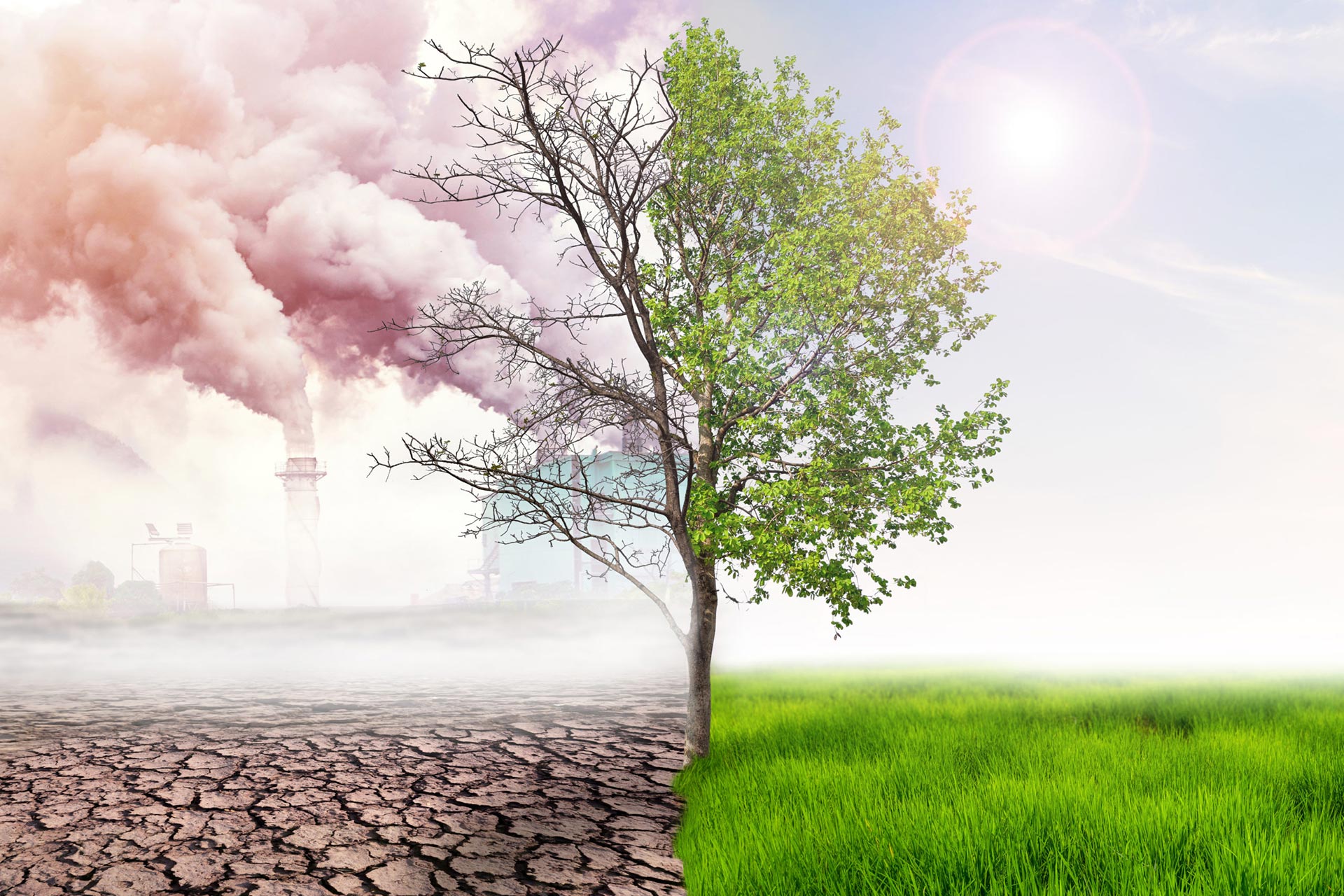Human activities, unlike the natural process of change, happen too fast and endanger our world in a much worse way than most people imagine. Indicated by the increasing greenhouse gas emission, especially carbon dioxide, and the changing levels of rainfall, we see the negative impact of climate change in every corner of the world from the summits to the depths of the oceans, from the equator to the poles. While glaciers are melting on the poles, the rising sea levels threaten tropical islands and lower coasts. As industrial activities continue to destroy green areas on earth, studies show that the greenhouse gas effect caused by forest destruction accounts for 15-17%. The protection of the forests to balance the level of carbon in the atmosphere, help slow down global warming, and prevent droughts is one of the most vital subjects that humans need to address.
By helping to regulate local and regional rainfall and providing drinking water, as well as the water needed by agriculture and industry, forests are a vital source for the survival of millions of people. However, forests are not protected sufficiently by humans. According to the studies carried out by WWF (World Wide Fund for Nature), the deforestation and degradation of forests and land across the globe lead to an increase in the total greenhouse effect on the earth. The numbers tell us that 1.3 billion tons of the global carbon emissions, calculated as 11.2 billion tons in 2017, resulted from deforestation and land-use changes. While climate change has a negative impact on the forests, it also damages the natural carbon cycle. Deforestation undermines humanity’s efforts in the fight against climate change. The studies show that approximately 3.3 million hectares of the world’s forests are being lost every year. Deforestation also threatens endangered species with extinction.
Forests Mitigate The Greenhouse Gas Effect
Deforestation, which has a significant role to play in climate change, is defined in the United Nations Framework Convention On Climate Change (UNFCCC) as the “human-induced conversion of forests to non-forest land”. According to some other resources, deforestation is defined as follows: “The clearing of trees without the intent of replanting or reestablishing a stand of trees.” As a result of the destruction of woodlands and forests, the carbon dioxide gas that was stored in these areas is released into the atmosphere and thus adds to the greenhouse effect. Forests store 3-5 tons of carbon dioxide, while producing 8-13 tons of oxygen per hectare each year. In other words, forests contribute to the balance between carbon dioxide and oxygen through photosynthesis.

Forests Increase Rainfall
The forested lands provide habitat for 70% of the animal and plant species living on earth and have a positive effect on the climate due to various reasons such as enabling the soil to absorb water, then collecting it through the roots of the trees and returning it back to the air, and providing shade for the soil. According to the results of the research on the forested and deforested areas, which otherwise share the same conditions, the level of precipitation is 50% higher in the forested areas when compared to the steppes. Forests also increase the humidity rate of the air. For example, the roots of an oak tree collect approximately 570 liters of water per day and other types of trees collect nearly 20 tons of water per year and then release it back to the atmosphere, which increases the humidity rate. This increases the relative humidity in the air, decreasing the evaporating power of the atmosphere.
Protecting Forest Areas
We need to take further steps to prevent forest degradation by protecting what we already have as well as creating more protected areas. According to the assessments of The Intergovernmental Panel on Climate Change (IPCC), deforestation and degradation of forests are responsible for 17% of the global carbon emissions. This means that deforestation is the third largest contributor to the greenhouse emissions, exceeding what the transportation sector accounts for. This is why ending deforestation and restoring degraded forests, especially in the tropical regions, are among the most urgent measures we must take in our fight against climate change.
Environmental issues such as global warming and climate change threaten the future of our world. We should not forget that deforestation lies at the root of many environmental problems and we must fight against it. This lies as an important responsibility on our shoulders if we want to save our future.
References
Dudley N., S. Stolton, A. Belokurov, L.Krueger, N. Lopoukhine, K. MacKinnon, T. Sandwith ve N.Sekhran [editors] (2010), Natural Solutions: Protected Areas Helping People Cope With Climate Change, IUCNWCPA, TNC, UNDP, WCS, World Bank and WWF, Gland, Switzerland, Washington DC and New York, USA.
DW (2020), İklim değişikliğine karşı en etkili silah: Ormanlar
https://www.dw.com/tr/iklim-de%C4%9Fi%C5%9Fikli%C4%9Fine-kar%C5%9F%C4%B1-en-etkili-silah-ormanlar/a-53235628
ICCCF (2019), Uluslararası İklim Değişikliği ve Ormancılık Konferansı, Sonuç Bildirgesi, Antalya.
KARAL Kübra, GENÇAY Gökçe (2020), Ormansızlaşmanın Küresel İklim Değişikliğine Etkilerinin Hukuksal Boyutlarının İncelenmesi, Bartın Orman Fakültesi Dergisi, 572-573.
KIRIŞ Rüstem, TOPRAK (2007) Salih İklim Değişikliğinde Ormanların Rolü, 372.
TOLUNAY Doğan (2013), Ormanlar ve İklim Değişikliği, Portakal Baskı, 31.
WWF (2020), Akdeniz Ormanlarının İklim Değişikliğine Uyumu
https://www.wwf.org.tr/ne_yapiyoruz/doga_koruma/akdenizormanlarininiklimdegisikligineuyumu


